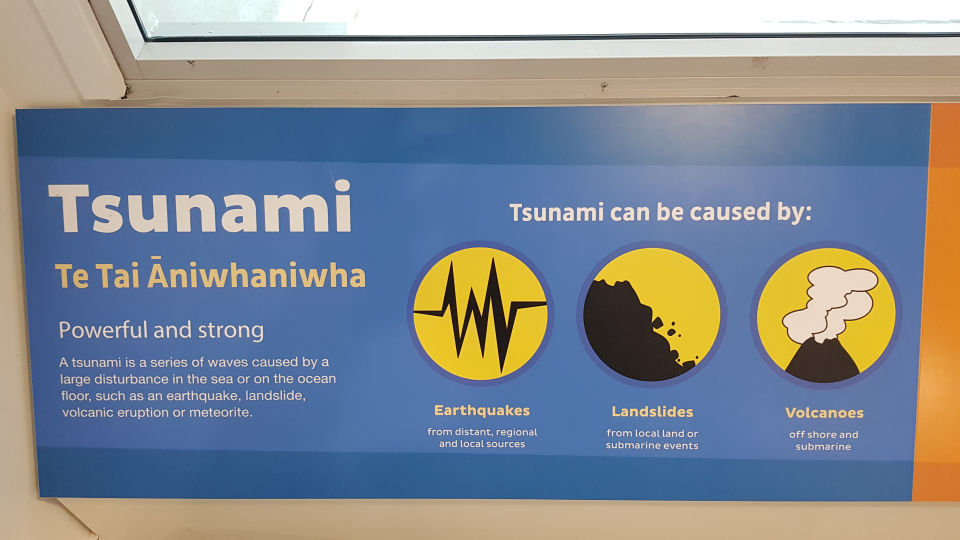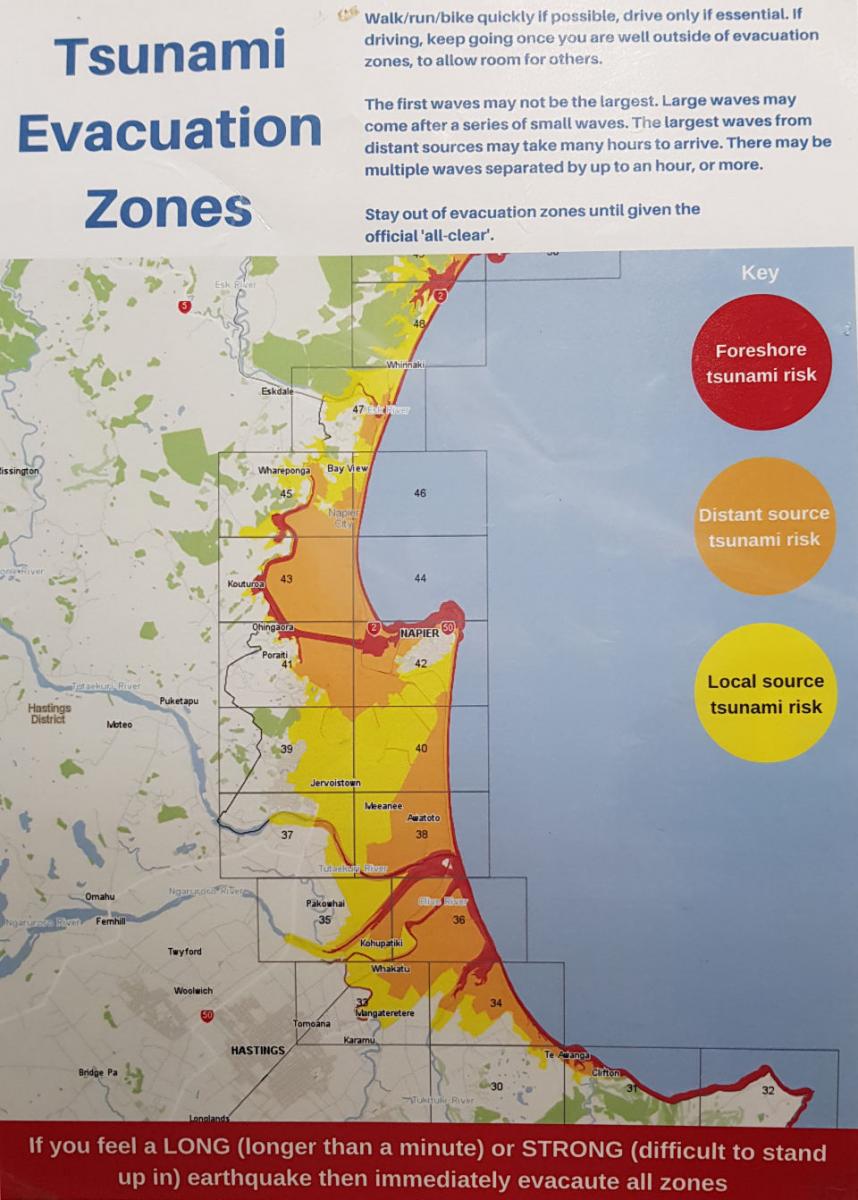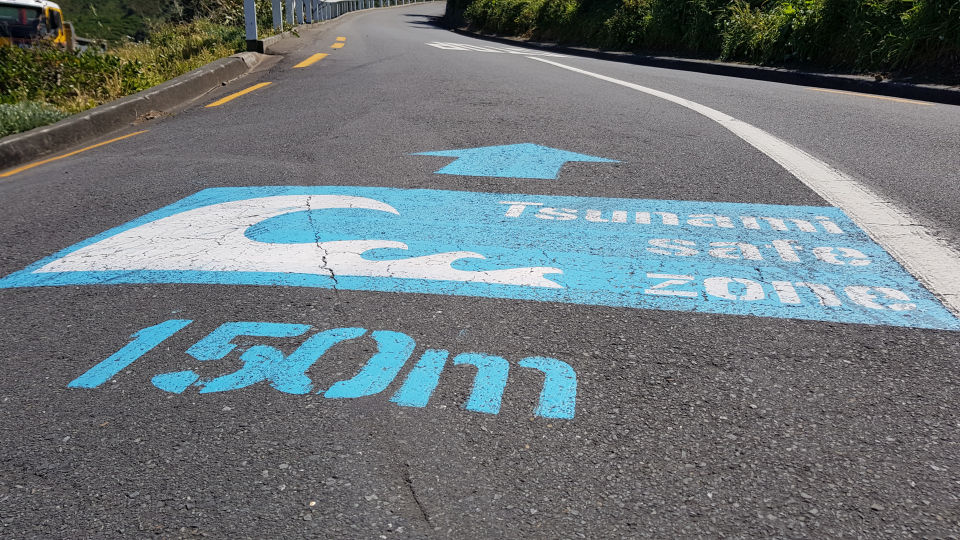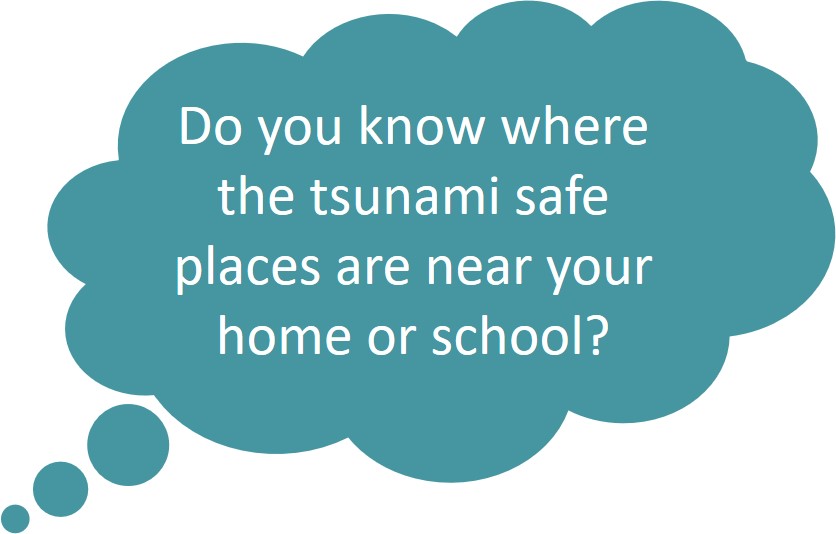You can contact LEARNZ, part of CORE Education, at:
Postal Address:
PO Box 13 678,
Christchurch 8141,
New Zealand
New Zealand’s entire coastline and some of our larger lakes are at risk of tsunami.
Tsunami can violently flood our shores, causing devastating property damage, injuries and loss of life.
The biggest tsunami in New Zealand are likely to be caused by events close to our shore and can arrive within minutes.

A tsunami is a wave or series of waves caused by the sudden shifting of water by an earthquake, volcanic eruption, landslide or even a meteorite impact.
Tsunami waves contain lots of energy. They travel much further compared to ordinary coastal waves. Even small tsunami can be dangerous to those in or near the water.
Once they travel over land, tsunami pick up debris, can knock down buildings and have enormous destructive force.

Tsunami can come from different sources.
Local tsunami are generated by earthquakes very close to New Zealand. This type of tsunami is very dangerous because it can arrive at New Zealand coastal areas within minutes.
Regional tsunami, like one generated from an earthquake in the Southwest Pacific are between one and three hours travel time away from New Zealand. An eruption from an underwater volcano in the Kermadec Trench to the north of New Zealand can generate a regional tsunami.
Distant-source tsunami, like one generated from an earthquake near Chile, can take 14 hours or more to arrive.
For a local source tsunami that can arrive in minutes, there won’t be time for an official warning. It is important to recognise the natural warning signs and act quickly.
There will be time to issue official tsunami warnings for a regional or distant tsunami.

Make and practise your emergency plan with your family, and make sure you and your family each have a grab bag and emergency supplies.
Know your tsunami evacuation zones. Make sure you know where to go, whether you are at home, at school or on holiday. Ask your family and your teacher if they know your tsunami evacuation zone and ask them to practise it with you regularly.
Your local Civil Defence Emergency Management group has tsunami evacuation zone maps and regional advice.
If you are visiting an area at risk from tsunami, ask your family to check with the hotel, motel or campground operators for tsunami evacuation information and find out what the local warning system is for tsunami. It is important to know the local escape routes before any warning is issued.
If you are near a shore and experience any of the following, take action. Do not wait for official warnings.
Drop, Cover and Hold during the shaking. As soon as the shaking stops, move immediately to the nearest high ground, out of all tsunami evacuation zones, or as far inland as you can.
Remember, Long or Strong, Get Gone.

Ready for a quiz? Try the Tsunami interactive activity.
Walk, run or cycle if at all possible to reduce the chances of getting stuck in traffic.
Take your animals with you only if it will not delay you. Do not spend time looking for them and if you are not at home, do not return to get them.
While evacuating, avoid hazards caused by earthquake damage, especially fallen power lines.
Do not return until an official all-clear message is given by Civil Defence.
Tsunami warnings are published on www.civildefence.govt.nz and Twitter @NZCivilDefence. Tsunami warnings will also be broadcast on radio and television. An Emergency Mobile Alert may also be issued if there is a threat of flooding of land areas.
Warnings may also be broadcast through siren, phone, mobile text, loud hailer or other local arrangements. Contact your local Civil Defence Emergency Management Group to find out about the warnings you can expect to receive in your community.
Immediately follow the advice of any emergency warning. You may receive warnings from one or several places. Respond to the first warning. Do not wait for more messages before you and your family act.